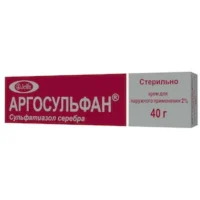Description
Lamizil Tablets 250 mg. №14
Ingredients:
Each tablet contains 250 mg of Terbinafine Hydrochloride.
Mechanism of Action:
Terbinafine, the active ingredient in Lamizil tablets, inhibits the enzyme squalene epoxidase, crucial for fungal cell membrane synthesis. This disruption leads to squalene accumulation, resulting in fungal cell death.
Pharmacological Properties:
Lamizil tablets possess antifungal properties attributed to terbinafine’s mechanism of action, targeting fungal cell membranes and promoting cell death.
Indications for Use:
Lamizil tablets are indicated for the treatment of fungal infections affecting the skin and nails, including athlete’s foot and ringworm.
Contraindications:
Avoid Lamizil tablets if there is a history of allergic reactions to terbinafine or any other components of the formulation.
Side Effects:
Common side effects may include gastrointestinal disturbances, rash, and headache. Consult a healthcare professional for a complete list of potential adverse reactions.
Usage Instructions:
The typical dosage regimen involves taking one tablet daily with a meal for six weeks to manage fungal infections. Swallow the tablet whole with water; do not crush or chew.
Benefits Compared to Analogues:
Lamizil tablets offer high efficacy rates and low recurrence rates in treating fungal infections, making them a preferred choice over alternative antifungal medications.
Suitable Patient Groups:
Lamizil tablets are suitable for adult patients with fungal skin and nail infections. Special consideration should be given when prescribing to children, pregnant individuals, and the elderly.
Storage Conditions and Shelf Life:
Store Lamizil tablets in a cool, dry place away from direct sunlight. Check the packaging for the expiration date and adhere to proper storage guidelines to maintain product integrity.
Packaging Description:
Lamizil tablets are typically packaged in blister packs containing 14 tablets each. The packaging should include essential information such as dosage instructions, active ingredients, and manufacturer details.
Scientific Evidence:
Terbinafine in Lamizil tablets has been extensively studied for its efficacy in treating fungal infections. Clinical studies have shown high cure rates and low recurrence rates, establishing terbinafine as a reliable antifungal agent.




